Growing cassava associated with peanuts
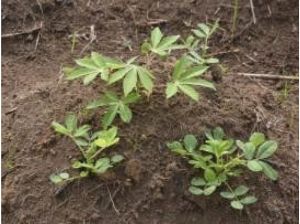
The association of cassava/peanut aims to ensure better growth and development conditions. Associating a long-cycle crop with a short-cycle crop helps increase and spread income from the cultivated plot.
Presentation of crops
Cassava
- Local Name (Kikongo): Mayaka.
- Family: Euphorbiaceae.
- Genus: Manihot.
- Species: Esculenta.
- Varieties: TME419, 1661, Sadisa, Nsansi, Zizila, Butamu, and Rav.
Peanut
- Local Name (Kikongo): Nguba.
- Group: Legumes.
- Genus: Arachis.
- Species: Hypogea.
- Varieties: JL24 and ICGM281.
Prerequisites
- Topography: Cassava is a crop to be grown on a plateau, a bottom slope, or an intermediate slope. Flood-prone lowlands are not recommended; constant moisture causes rotting in cassava roots.
- Crop History: Recent fallow (less than 2 years) or cereal crops (rice, corn).
- Density: For cassava, 10,000 cuttings (50 bundles)/ha and for peanuts, 100 kg seeds/ha.
Implementation Steps
Preparation
- Delimit the plot.
- Clear without burning materials: Use a fork to clear the land and avoid burning.
- Store a portion of the mowed grass for mulching, while the other part is reserved as fertilizer for burial (tufts, small grasses, root hair...). During the creation of ridges or mounds, it is advisable to bury small weeds, green leaves, young tender stems of legumes, Tithonia diversifolia, or grasses present in the plots (Imperata cylindrica, Hyparrhenia sp,...) to ensure an organic element input.
- Uproot shrubs.
- Plow to a depth of 20 cm.
- Creating mounds and ridges maximizes water usage and prevents erosion:
- Create ridges following contour lines: 10 to 20 m long; 0.5 m wide at the top; 0.50 m apart from each other.
- Create mounds in contour and staggered pattern: 0.20 to 0.30 m high; 0.5 m in diameter at the top; 0.4 m apart from each other.
Light soil work and the burial of plant material are agroecological practices.
Planting and sowing
- Date: At the beginning of the rainy season (October and/or March). Cassava planting and peanut sowing can be done at the same time or at a maximum interval of one month.
- Harvest cassava stem cuttings from the middle part of the stem (once cut, they can be stored for 2 weeks).
- Segment the stem cuttings into cuttings of 20 to 25 cm before planting, keeping 3 nodes per cutting to ensure successful sprouting.
- Attention should be paid to using healthy seeds.
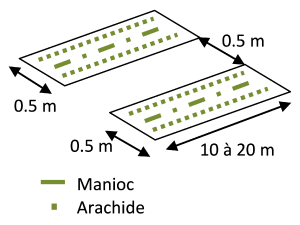
Case 1: Association on ridges
- Plant cassava cuttings:
- Spacing: 1 m within the row (10 cuttings for a 10 m ridge).
- Density: 1 cutting per location, planted horizontally or obliquely (2/3 of the length into the soil), preferably horizontally to ensure a good survival rate (drying of vertical cuttings).
- Sow peanuts:
- 3 rows per ridge (1 row on each side of the cassava row and 1 row on the cassava row).
- Sow in holes (place several seeds in one hole) at a distance of 20 cm on each of the 3 rows, the holes on the middle row (with cassava) should be staggered compared to the other 2 rows.
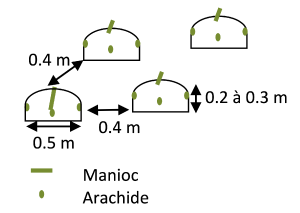
Case 2: Association on mounds
- Plant cassava cuttings:
- 1 cutting per mound (at the top).
- Plant horizontally or obliquely (2/3 of the length into the soil).
- Sow peanuts:
- Sow in holes (place several seeds in one hole) around the mound (mid-height) with a spacing of 30 cm between the holes.
Maintenance
- Complete 2 weeks after planting and sowing.
- Weed 15 days to 3 weeks after planting and sowing, and as needed, until peanut harvest.
- Mulch after peanut harvest: Cover all the surface of ridges or mounds with stored or imported straw and with weeding residues. Supplement the mulch as needed during the cycle (peanut haulms after harvest can be used as mulch for cassava).
- It is necessary to emphasize the importance of replenishment and mulching as they positively influence production.
- Attention: Clear mulch around the cassava stem base to prevent phytosanitary risks (rot, bacterial diseases).
Harvest
- Cycle durations:
- Cassava: 15 months (time required for maximum root development).
- Peanut: 90 days.
- Peanut harvest is single, while cassava harvest can be spread over several weeks.
Storage and conservation
- Cassava
- Store the roots in damp soil.
- Conservation: Maximum 1 week after harvest.
- Peanut
- Store the pods (previously dried) in bags, protected from rodents and insects.
- Conservation: From a few weeks to several months.
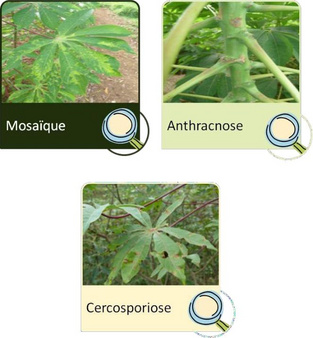
Protection
Main cassava diseases
- Viral disease: Mosaic manifests as chlorotic spots (leaves discolor and exhibit light green, yellow, or white spots).
- Bacterial diseases: They cause burns and wilting of leaves.
- Fungal diseases: Cercosporiosis causing brown spots, anthracnose manifesting as cankers (lesions), and rot that slows down growth.
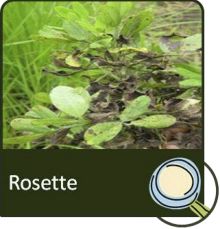
Main peanut hazards
- Viral disease: Rosette causes stunting of plants.
- Ants and rodents.
Recommendations
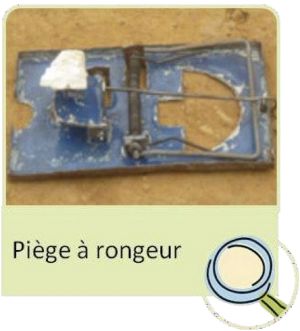
- Use healthy cuttings and seeds.
- Plant cassava clones that are resistant or tolerant to mosaic, bacterial diseases, and anthracnose.
- Plant at the beginning of the rainy season.
- Follow agricultural practices: Organic soil amendment, cuttings preparation, plowing, mulching, and crop rotations.
- Avoid visiting infected fields.
- Ensure phytosanitation: Eliminate and destroy plants showing any symptoms of disease (remove them from the plot and burn them). Important for cassava even if removing plants represents a decrease in production.
- Use wood ash against insects and traps against rodents.
Calendar
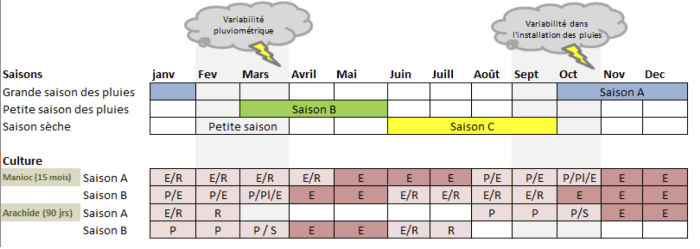
Legend:
- P: Soil preparation.
- Pl: Planting.
- E: Maintenance.
- S: Sowing.
- R: Harvest.
Technical and economic results
Average yield : 20 t/ha
- Cassava: 18 t/ha.
- Peanut: 2 t/ha.
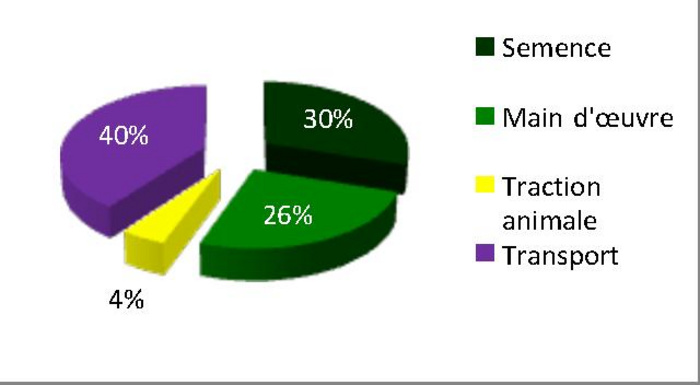
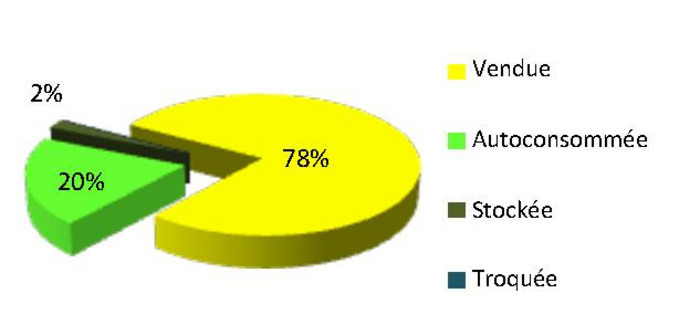
Sources
This page was written in partnership with the Urbane project and with the financial support of the European Union.

